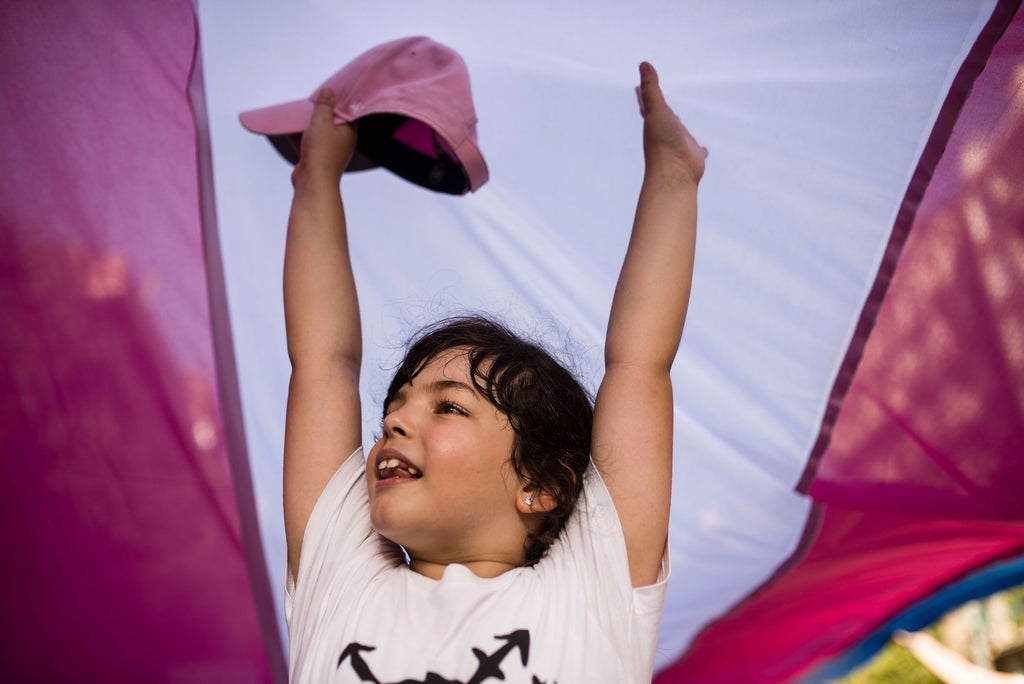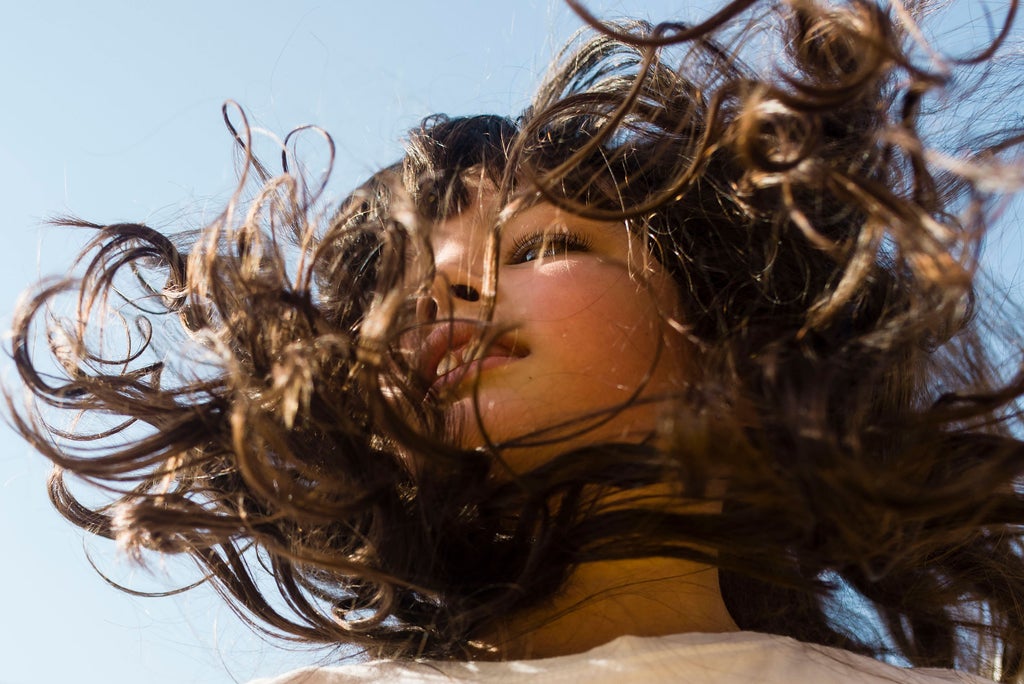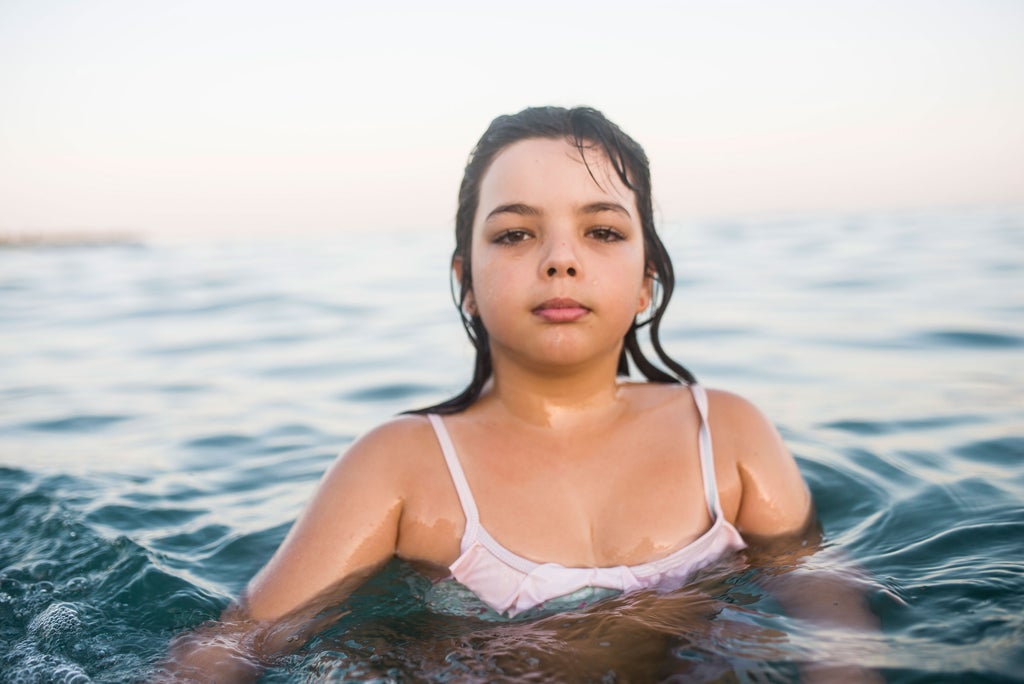“Cora says she always felt like a girl, and as soon as she was able to talk she found ways to make that known. Before bedtime, she’d ask her mum if anyone could be a girl, and then she’d say that that’s what she wanted to be when she grew up. And if people ever called her ‘handsome’ she’d correct them, always responding, ‘not handsome, pretty. I’m pretty.’” 35-year-old Argentinian photographer Gabo Caruso is talking about the brilliant young collaborator of her three-year long photo series – Cora, a 10-year-old trans girl living in Barcelona with her family.

Caruso met Cora after moving to Spain in 2018 and reaching out to Chrysalis, an association for families with trans children. “When I was still living in Argentina, the gender identity law had just been legislated, and the story of Luana, an Argentinean trans girl, was all over the news because she was the first girl in the world to get an ID card with the name she wanted on it. That story moved me deeply, and it made me want to find more people like her.”
Two weeks after meeting Cora’s parents through the organisation, and talking to them openly about her intentions to document their daughter’s process, she was introduced to Cora. “That meeting changed my life forever,” Caruso says. “She invited me into her room and we took pictures together while getting to know each other. I had gone there with all of these ideas for pictures but as soon as I met her all of that fell away. We just started playing together and it happened naturally from there.”
As the weeks went by, Caruso proposed visiting more often and continuing to photograph Cora’s life, because one day and one set of pictures would never feel like enough. “I wanted to do an in-depth project about her daily evolution as a trans girl, and that would take a long time. Her family said yes, but above all it was Cora who accepted, and I still feel deeply privileged that she wanted to work together.”

Cora’s transition began when she was five years old. One day, walking through the park with her mum, she said, “I have no luck at all, nobody sees me,” with a sadness both of them will always remember. “That one sentence changed everything,” says Caruso, “and from there her parents contacted their paediatrician. They knew nothing about childhood transitioning then, but right from the beginning they were dedicated to learning for Cora. And so it was that on the 16th November 2016, Cora finally came out into the world as the girl she had always been.”


Caruso’s pictures unfold Cora’s world beautifully. It’s a true collaboration and Cora is open and comfortable in front of the camera. In sunny and colourful scenes, we see her at home and at school, having haircuts, swimming, sleeping, and playing both alone and with friends. There are quieter moments of uneasiness in the pictures too, and both Cora and Caruso feel these are important to give a complete view of her lived experience. “Above all, and beyond any labels, Cora is a person. A child – someone who laughs, cries, sings, plays, suffers, learns, and gets frustrated,” Caruso says. “We want to be able to show the whole spectrum of her feelings.”



The relationships Cora has with those around her are really at the heart of the work. “Cora has a beautiful relationship with her family, and they have always supported and accompanied her from a respectful and not very adult-centric place.” Cora’s grandmother was another fundamental link in her transition, Caruso adds, and explains how the 80-year-old woman had said simply “Grandmotherly love is all the same,” when she was told her grandchild was now going by Cora.
“Let’s not forget that historically the first place of trans exclusion was the family, so the support system Cora has is revolutionary. And it’s the same with school – another institution that traditionally has not supported trans people. In Cora’s case, her school had absolutely no information, but they agreed to be informed about the issue and a few days later they called a parents’ meeting. Her teacher recalls that in class they took the change naturally because they already perceived it, and that’s really powerful too.”



Childhood transition is a divisive topic, and the social politics of it are nuanced and incredibly complicated. Caruso knows this, of course, and so she wants her work to help add something positive to that conversation, inspired by Cora’s radiant outlook on life and identity. “To those people who don’t agree, the thing I would have to say is that all of us build our identities from an early age – you, me, Cora, everyone – but it is only called into question when it is contrary to the gender assigned at birth. Genitalising identity has done a lot of damage, and the reality is that gender identity is not determined by genital organs or chromosomal information. Identity comes from the question “who am I?” and that question can only be answered by the individual. In addition, in trans childhood, other issues linked to adultcentrism come together. Minors are underestimated just because they are minors, as if they are incomplete people who need to be taught who they are, but the 1989 Convention on the Rights of the Child recognised children as subjects of rights. When you have a trans person in your life, you are left with no doubt that they know exactly who they are, no matter the age. Ultimately, through this work, I hope that people not only see Cora, but understand how many others like her there are in the world.”

From her time with Cora, Caruso says that she has learnt invaluable lessons from her young friend. “Cora teaches me things every day, with her questions, her phrases, her friends. And as for the way I approach my profession now, well – the media have long linked trans people to loneliness, exclusion and poverty, and those injustices also ended up generating stigmatization. Now more than ever, I believe in creating photojournalism that broadens our views, and celebrates empathetic, happy stories that exist outside of the status quo. I want to use photography to create bridges, not borders, because the world is changing – and Cora is a wonderful result of that.” Caruso believes the more she disappears as the author of the pictures, the more the work makes sense. “Because if we talk about the autonomy of children, and the right to be able to make their own life decisions, then in the end, who better to tell the world who she is than Cora herself?”

Caruso says Cora speaks wistfully about her future, dreaming as any other little girl might. “She is aware that she will experience changes in the future, that she will grow up and have to make some big decisions, and that she will encounter unfornature comments, but she is well informed and that empowers her. She knows that not everyone accepts trans people, but it is clear to her that it is society that must change. Cora is from a much more diverse generation than that of her predecessors, and she knows that the historical idea of being ‘born in the wrong body’ is an old and obsolete paradigm. She has grown up believing that all people have legitimate bodies, and not allowing her existence to feel marginalised. She is making space for herself as she grows up, and that is something historic.”

Some of Caruso’s favourite images from the project are of Cora playing in the sea. In one, she does a handstand upside down in the water, and in another she floats, dream-like on the surface, arms and feet outstretched. Meanwhile, the most striking one sees her standing with the water right up to her shoulders, pink swimsuit on, and a content expression on her face. “I’ll always remember that day,” Caruso smiles. “We were on the beach in the blue hour, and as I photographed her splashing around and doing pirouettes in the water, I asked her how she had chosen her name. Nobody in her family really knew the answer at that point, and she’d never told me either. She looked at me on camera and said, “When I was about five, a little mermaid named Cora appeared on my TV, and I just felt like that was MY name. Later, when my family suggested we look for another name, I told them ‘no need, I am Cora.’ And that’s how it happened. Seconds later, I took the picture, and she went back into the water, just like a little mermaid.”


Like what you see? How about some more R29 goodness, right here?
Intimate Photos Of A Transition (NSFW)